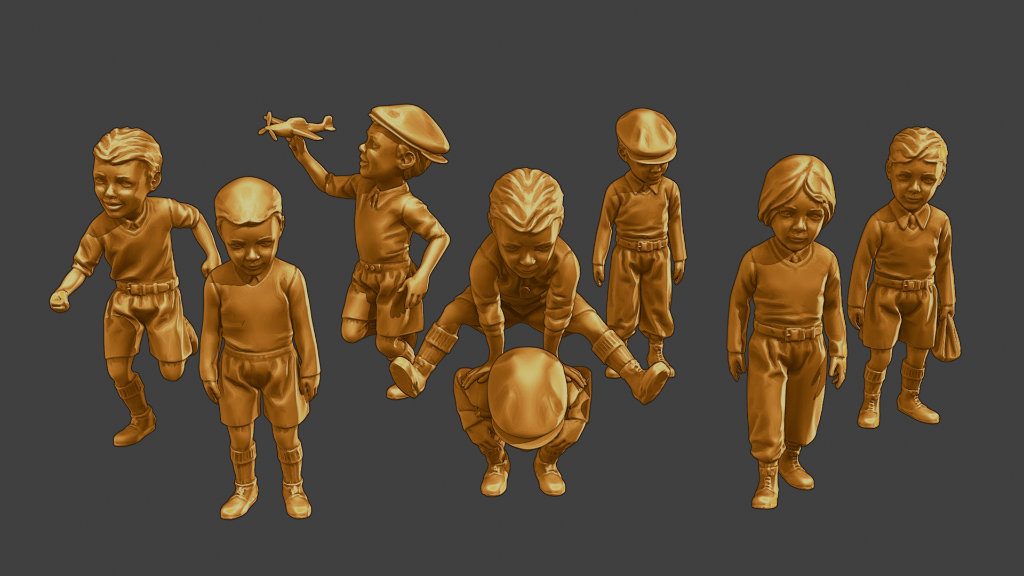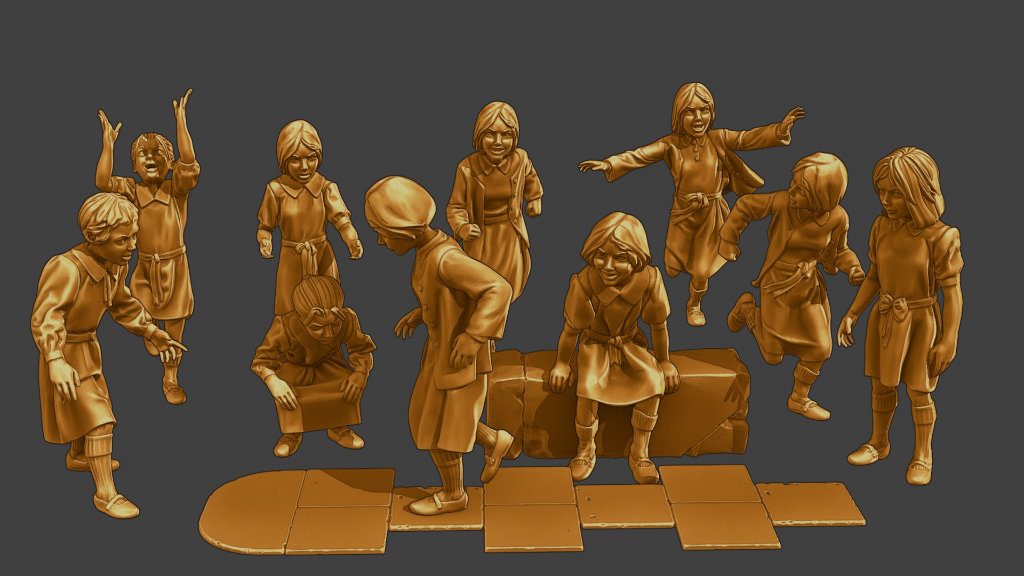CHILDREN IN THE WORLD WAR II (MINIATURES)




Great Britain made the decision to give refuge to ten thousand Jewish children, under the one clear condition that they traveled alone, without their parents. Kindertransport (Children’s Transport) was the informal name of the program implemented in order to receive these refugee children between 1938 and 1940.
The level of extreme violence that had been imposed on German Jews pushed parents to make the tough decision to enroll their children in this refugee program and send them to another country to live with strangers. The British commanders agreed to allow a limited number of minors from Germany, as well as from the occupied territories (Austria and Czechoslovakia), to enter the country. They were only allowed access if their guardians or relatives could guarantee their maintenance and send it in advance payments upon the minors’ arrival.
The British Committee for Jewish Children in Germany and the Movement for the Care of German Children raised funds to formalize the migrations of the infants and attempted to place them in private homes. Citizens who wished to provide support, as well as the children’s guardians, also had an obligation to pay for care, education and, eventually, emigration. Once the economic issue was resolved, Britain issued only temporary visas.
Children were especially vulnerable during the Holocaust era. The Nazis practiced infanticide of those children they called «undesirable» and labeled as dangerous according to their ideology. The Germans and their allies murdered children on these grounds.
It was understood that at the end of the «crisis» the children would return to their families. The few infants included in the program were supervised by others, although the trips never included personnel over the age of 18. The first Kindertransport arrived in Harwich, Great Britain, on December 2, 1938 with a shipment of about 200 children from a Jewish orphanage in Berlin that had been looted and destroyed during Kristallnacht.
The main trains departed from Berlin, Vienna and Prague, so that some children who lived in cities far from the metropolis first had to pay for the journey to the capitals to finally arrive at the collection sites. The Jewish organizations within the Reich planned each of the trips.
In Germany, the Representation of Jews in Berlin and its successor, the Jewish Association before the Reich, intervened to facilitate the process of transfer; likewise, the Jewish Community Organization in Vienna hurried any necessary paperwork because, in the case of Austria and Czechoslovakia, the conditions were urgent due to the fact that the parents of most of the children who were to emigrate were already in concentration camps or lacked the economic resources to be able to take care of them. Jewish institutions gave priority to orphans and those who were already living on the streets.
The convoys ran for almost two years. Those who managed to complete the journey reached ports in Belgium and Holland. The vast majority of these children were orphaned after the war. More than 90 percent of them never saw their families again.






